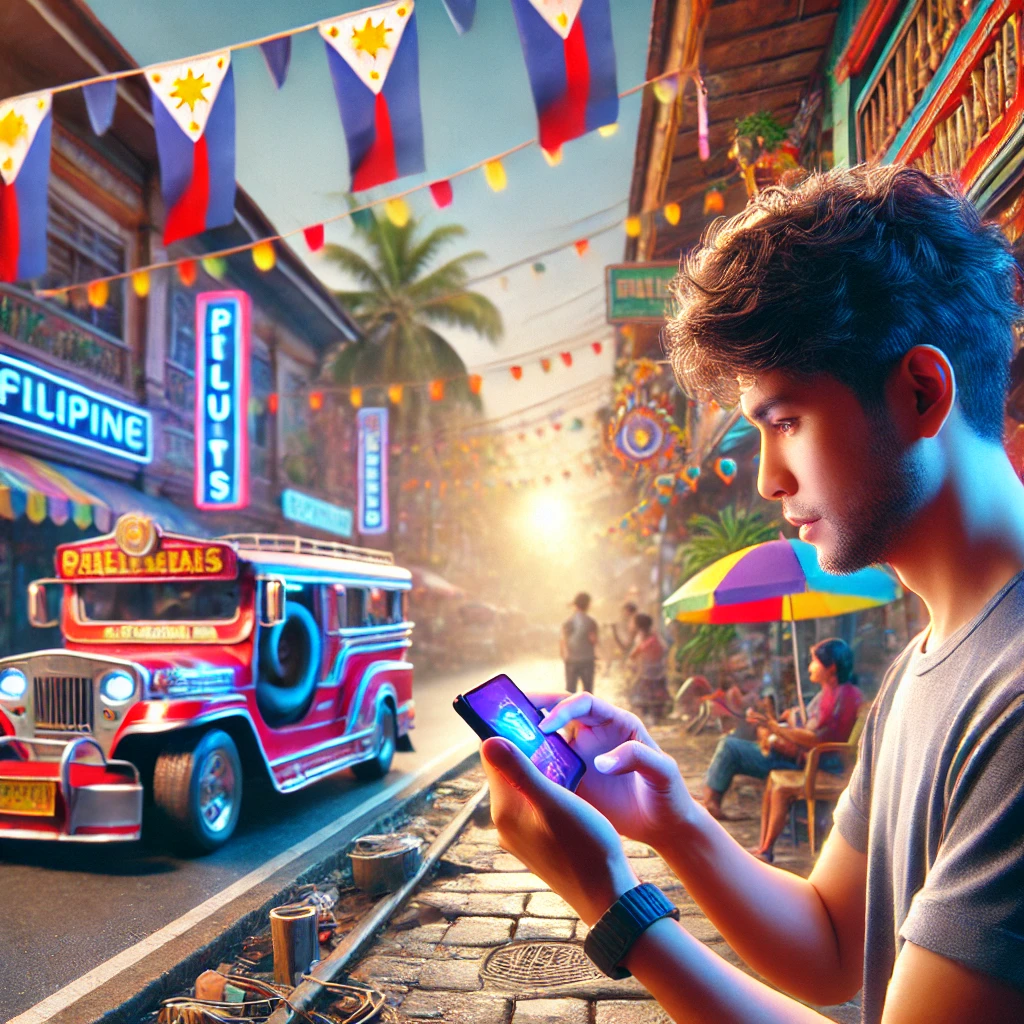Kamusta, mga ka-internet! Welcome to the wild and wacky world of Filipino slang in the age of social media. If you’ve ever found yourself scratching your head at the latest Pinoy internet lingo, wondering if you’ve somehow time-traveled to a future where English and Tagalog had a love child, you’re not alone. Our beloved Filipino language has always been a melting pot of influences, but social media has cranked up the heat and tossed in a whole new set of ingredients. From the bygone era of “jejemon” to the current reign of “jowable,” let’s dive into how platforms like Facebook, Twitter, and TikTok are giving our slang a digital makeover faster than you can say “LOL.”
The Rise of Jejemon: The OG of Filipino Internet Slang
A blast from the past
Remember the early 2010s? When planking was still a thing, and we all thought the world would end in 2012? Well, that was also the heyday of the “jejemon” phenomenon. For the uninitiated (or those who’ve successfully blocked it from memory), jejemon was a form of text speak that took letter substitution to the extreme. It was like the typewriter had a nervous breakdown and spat out words that looked like encrypted alien messages.
Here’s a quick throwback to jejemon speak:
| Normal Text | Jejemon Version |
|---|---|
| Hello | H3ll0w |
| Kumusta ka? | kMztA q? |
| I love you | iLuBqoOh |
This linguistic rebellion gained so much traction that it even made its way into mainstream media, with news reports and academic papers discussing its impact on the Filipino youth. It was the first major wave of internet-influenced slang that had older generations clutching their dictionaries in horror.
The social media catalyst
So, how did jejemon spread faster than gossip in a barangay? Two words: social media. Platforms like Friendster (rest in peace, old friend) and the early days of Facebook provided the perfect breeding ground for this quirky way of typing. Suddenly, teens had a space where they could communicate free from the watchful eyes of grammar-policing adults. It was rebellion in its purest form – sticking it to the man, one mangled word at a time.
From Jejemons to Millennials: The Facebook Era
The great normalization
As Facebook gained dominance in the Philippines (let’s face it, it’s practically our national homepage), something interesting happened. The wild west of jejemon speak started to settle down, giving way to a more standardized form of online Taglish. This was the era when “Haha” evolved into “Hehe,” then “Hihi,” and finally reached its final form: “Charot.”
The rise of reactionary slang
With the introduction of Facebook reactions, we saw a whole new category of slang emerge. Suddenly, “Haha reax only” became a legitimate response to just about anything. The laugh-cry emoji 😂 found its way into every other sentence, and “Ang pogi/ganda naman” became the standard compliment, regardless of whether the person actually looked good or not (sorry, not sorry).
Here’s a quick guide to Facebook-era reactions and their real meanings:
| Reaction | What it really means |
|---|---|
| Like 👍 | I acknowledge your existence |
| Love ❤️ | Either I genuinely love this or I’m your mom |
| Haha 😆 | I exhaled slightly through my nose |
| Wow 😮 | I’m either impressed or horrified |
| Sad 😢 | I’m contractually obligated to feel bad |
| Angry 😠 | I’m about to start a comment war |
Twitter: Where Brevity Breeds Creativity
Character limits and linguistic gymnastics
Enter Twitter, the platform that forced Filipinos to condense their love for lengthy storytelling into 280 characters (or 140, if we’re going old school). This character limit became the pressure cooker for a new breed of Filipino slang – short, punchy, and often hilarious.
The birth of hugot culture
Twitter’s brevity gave rise to the “hugot” phenomenon. Suddenly, everyone was a poet, turning mundane observations into heart-wrenching metaphors for unrequited love. “Parang cellphone lang ako, hinahanap lang kapag kailangan” (I’m like a cellphone, only sought after when needed) became the battle cry of the brokenhearted millennial.
Hashtag nation
Twitter also popularized the use of hashtags, giving us gems like:
- #PinoyPride (used for literally anything a Filipino does)
- #AlDub (the peak of Filipino social media frenzy)
- #DuterteSerye (because politics is our favorite telenovela)
These hashtags didn’t just trend; they became part of our daily vocabulary, seamlessly integrating into face-to-face conversations. Suddenly, people were punctuating their sentences with “hashtag blessed” in real life, and we all collectively decided that was normal.
Instagram: The Visual Vocabulary Revolution
Caption creativity
While Instagram is primarily a visual platform, it has had a surprising impact on Filipino slang, particularly in the art of captioning. The pressure to come up with witty, pun-filled captions for every selfie and food pic has led to some truly inspired wordplay.
The emoji invasion
Instagram also normalized the use of emojis as a form of slang. Suddenly, 🍑 wasn’t just a peach, and 🍆 made everyone giggle for reasons that had nothing to do with eggplants. The Filipino penchant for innuendo found a whole new playground in the emoji keyboard.
Here’s a quick guide to some popular Filipino Instagram caption styles:
| Caption Style | Example |
|---|---|
| The Pun | “Don’t go bacon my heart 🥓❤️” |
| The Hugot | “Sana all may forever. Pati ba naman sa data?” |
| The Humblebrag | “Just a simple day at the beach 🏖️ #blessed” |
| The Emoji Overload | “Friday night 🍻🎉💃🕺🎊🥳” |
TikTok: The New Frontier of Filipino Slang
Short-form video, long-term impact
TikTok burst onto the scene like a hyperactive toddler hopped up on candy, and it brought with it a whole new lexicon. Suddenly, “It’s the _ for me” became everyone’s favorite way to point out the obvious, and “sheesh” was no longer just something your lolo said when he was mildly inconvenienced.
The dance of language
TikTok’s format of short, often dance-based videos has led to a unique blend of visual and verbal slang. Phrases like “sksksks” and “and I oop-” found their way into Filipino vernacular, often accompanied by specific hand gestures or dance moves. It’s like our language evolved its own set of emotes in real life.
The rapid-fire nature of trends
One of the most notable impacts of TikTok on Filipino slang is the sheer speed at which new terms come and go. What’s trending today might be cringe tomorrow. This rapid cycle has made Filipino slang more dynamic than ever, with new words and phrases popping up and disappearing faster than you can say “Pinoy TikTok is not a personality trait.”
The Cross-Platform Pollination of Slang
The great slang migration
One of the most interesting phenomena in the evolution of Filipino social media slang is how terms and phrases migrate across platforms. A word might start on Twitter, gain traction on Facebook, get memed on Instagram, and finally evolve into a TikTok dance challenge. It’s like watching linguistic natural selection in real-time.
The meme effect
Memes have become a universal language of the internet, and Filipino meme culture has given birth to some of our most enduring slang terms. From “Anyare?” to “Petmalu,” memes have a way of cementing certain phrases in our collective vocabulary long after the original image has faded from memory.
Here’s a quick rundown of some cross-platform slang evolution:
| Slang Term | Origin | Evolution |
|---|---|---|
| Lodi | Spread to Twitter, became a common term of endearment | |
| Jowable | Became a popular hashtag on Instagram, evolved into TikTok challenges | |
| Sana all | Meme | Started on Facebook, became ubiquitous across all platforms |
The Impact on Mainstream Filipino Language
From internet to everyday
What starts as internet slang doesn’t always stay on the internet. Many of these terms have found their way into everyday conversation, TV shows, and even advertisements. It’s not uncommon to hear a news anchor drop a “sana all” or see a billboard using “jowable” to sell deodorant.
The generation gap
This rapid evolution of language has led to some hilarious intergenerational miscommunications. Imagine trying to explain to your tita why you just called her dog “smol” instead of “small,” or why you responded with “sksksks” when she showed you her new plants.
The academic dilemma
The influence of social media slang has even reached the hallowed halls of academia. Filipino language teachers are now faced with the dilemma of whether to embrace these new terms or stick to traditional Tagalog. It’s like trying to teach a class on proper dining etiquette while everyone’s eating with their hands and loving it.
The Future of Filipino Slang in the Social Media Age
Predicting the unpredictable
Trying to predict the future of Filipino slang is like trying to guess what’s inside a mystery flavor Jollibee peach mango pie – it’s exciting, potentially delicious, but also a little scary. As new platforms emerge and existing ones evolve, our slang will undoubtedly continue to change at breakneck speed.
The global influence
With more Filipinos than ever connected to the global internet culture, we’re likely to see an even greater influx of international slang being Filipinized. Get ready for more “Pinoy-fied” versions of viral terms, probably with a side of adobo-flavored wordplay.
The cycle of cringe
One thing’s for sure – today’s coolest slang will be tomorrow’s source of embarrassment. But fear not, for in the great circle of linguistic life, even the cringiest terms may one day be reborn as “retro” and “ironic.” So hold onto your “awit” and “slay” – they might just come back in style when you least expect it.
Slang-tastic Future Ahead
As we navigate the ever-changing landscape of Filipino social media slang, one thing is clear – our language is alive, kicking, and probably doing a TikTok dance challenge as we speak. From the dark days of jejemon to the glorious reign of “charot,” social media has transformed the way we communicate, creating a vibrant, dynamic, and often hilarious new dialect that bridges the gap between our physical and digital lives.
So the next time you find yourself confused by the latest Filipino internet slang, don’t worry. Embrace the chaos, enjoy the creativity, and remember – in the world of social media, we’re all just a few trending hashtags away from sounding like cool kids or completely out-of-touch titos and titas. And honestly? That’s the tea, sis. Charot!
Disclaimer: This blog post is based on observations and data available up to 2022. Language evolves rapidly, especially in the digital age, so some terms mentioned may have already become passé by the time you read this. If you spot any inaccuracies or if your favorite slang term didn’t make the cut, slide into our DMs (or, you know, leave a comment like it’s 2010). We’ll update faster than you can say “Sana all fact-checked.” No cap.




